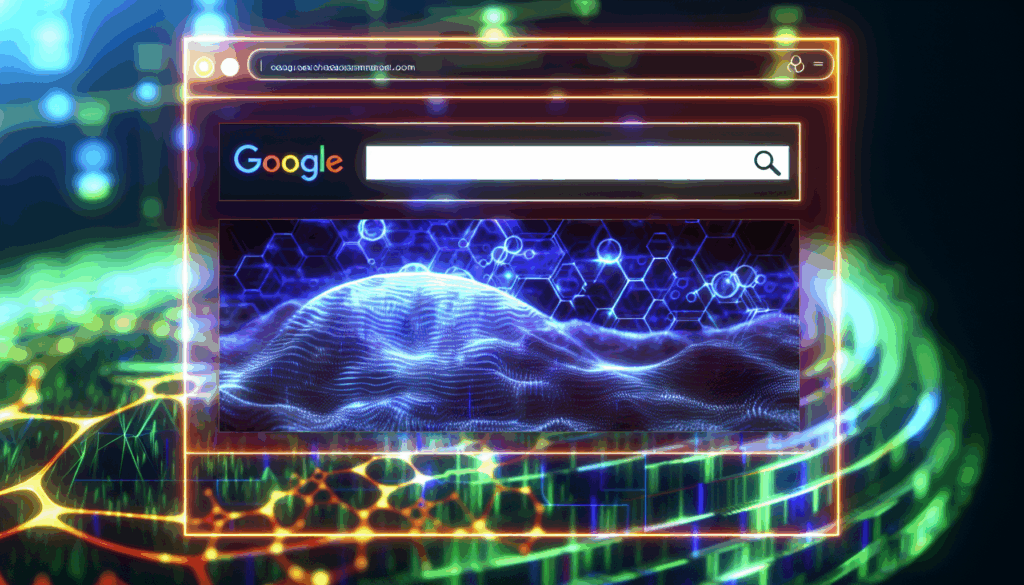Leveraging AI to Create and Sell Digital Art: A Step-by-Step Guide
──────────────────────────────
Chapter 1: Introduction to AI Tools for Digital Art
The digital art scene is evolving at an unprecedented pace thanks to artificial intelligence. Today’s digital artists have at their fingertips powerful AI tools that allow them to create stunning, original pieces with ease. Two standout tools in this arena are Midjourney and DALL·E 2. Both of these programs offer unique capabilities to transform your creative ideas into high-quality images using nothing more than descriptive text prompts.
Midjourney, for instance, operates via Discord and a web interface, enabling users to generate images based on a detailed explanation of what they envision. With features like “Vary (Region)” to finetune specific areas of a composition and “Style Reference” to mimic known artistic styles, Midjourney offers a versatile platform that can push your creativity to new heights ([Midjourney on Wikipedia](https://en.wikipedia.org/wiki/Midjourney?utm_source=openai)). DALL·E 2, developed by OpenAI, also brings a unique approach to image generation. It builds images from textual descriptions and offers a wide range of styles, allowing artists to experiment with various aesthetics and compositions ([DALL·E on Wikipedia](https://en.wikipedia.org/wiki/DALL-E?utm_source=openai)).
What makes these tools particularly exciting is how accessible they are. With even a basic understanding of prompt crafting—the art of writing detailed, imaginative descriptions—you can start generating artwork that might previously have required years of training and experience. In this guide, we’ll walk through everything from launching your first AI-generated creation to turning your work into a thriving business on platforms like Etsy. Whether you’re an artist looking to experiment or an entrepreneur wanting to tap into a burgeoning market, you’re in the right place.
──────────────────────────────
Chapter 2: Step 1 – Creating Art with AI: A Beginner’s Guide
Before diving into monetization, it’s essential to understand how to craft your digital art using AI tools. Here’s a step-by-step approach to get started:
1. Begin with Prompt Crafting
• A well-crafted prompt is the cornerstone of AI-generated art. Instead of simply typing “a tree,” try something more detailed like, “a vibrant oak under a sunset sky, with warm, glowing tones and a surreal, dreamlike background.” The more detailed you are, the better the AI can capture the intricacies of your vision.
• Experiment with adjectives and style descriptors. For instance, adding words like “impressionistic” or “minimalist” could steer the tool towards a particular style.
• Use sources like [Midjourney’s documentation](https://en.wikipedia.org/wiki/Midjourney?utm_source=openai) and [DALL·E 2’s examples](https://en.wikipedia.org/wiki/DALL-E?utm_source=openai) as guides for crafting prompts.
2. Embrace the Iterative Process
• AI art generation is rarely perfect on the first try. Generate numerous images, refine your prompts, and select the best outputs.
• Use editing features offered by the AI tools, such as Midjourney’s “Vary (Region),” to tweak specific parts of your artwork.
• Take notes on prompt variations that yielded the best results. Over time, you’ll develop a personal “recipe” for success.
3. Save and Prepare High-Quality Files
• Once satisfied with your creation, ensure you export the artwork in high-resolution formats like JPEG or PNG.
• Consider preparing multiple versions in standard ratios such as 4:5, 3:4, and 2:3. This flexibility allows you to cater to different customer print specifications ([How to create digital art prints to sell on Etsy](https://www.aliciarafiei.com/post/how-to-create-digital-art-prints-to-sell-on-etsy?utm_source=openai)).
4. Practical Example: The “Mystical Forest”
• Imagine you’ve created a piece titled “Mystical Forest.” You can start by writing: “Enchanted forest at twilight with misty trails, luminescent plants, and ethereal colors, realistic yet fantastical.”
• After several iterations, you finalize an image that perfectly balances surreal elements with nature’s beauty. This piece can then be saved, enhanced with minor edits in photo software, and prepared for sale.
By following these actionable steps, you’ll transform a blank canvas of text into a compelling piece of digital art that speaks to your audience’s imagination.
──────────────────────────────
Chapter 3: Step 2 – Understanding Legal Considerations
When turning your passion for AI art into a business, understanding the legal landscape is crucial. Intellectual property rights, copyright laws, and licensing agreements all come into play.
1. Copyright Compliance
• Even though AI creates the artwork, the creativity behind the prompts and the human selection process play a significant role. Still, be cautious not to unintentionally mimic copyrighted works.
• Keep abreast of ongoing discussions in legal circles regarding AI-generated art. Some legal experts argue that AI art might not qualify for traditional copyright protection, while others maintain that the artist’s input is sufficient ([Midjourney on Wikipedia](https://en.wikipedia.org/wiki/Midjourney?utm_source=openai)).
2. Licensing and Usage Rights
• Clearly define how your customers can use the digital art. You can set licenses that allow for personal use, but restrict commercial usage unless an additional fee is paid.
• Detail terms and conditions on your sales page to prevent any later misunderstandings—a proactive approach that fosters trust.
• Consider using Creative Commons licenses if you want to allow followers to share your art with attribution, or create custom licenses specific to your digital assets.
3. Avoiding Infringement
• Review your prompts to ensure they don’t closely mimic the style or elements of a well-known copyrighted piece.
• Document your creative process. Keeping records of how your art was generated can serve as an essential reference if any legal queries arise in the future.
4. Expert Insight: Legal Considerations for Digital Artists
• Legal experts recommend consulting with an intellectual property lawyer familiar with digital art. This helps tailor your policies to your specific needs while ensuring you stay compliant with evolving regulations.
• Resources such as [DALL·E’s FAQ on Copyright](https://en.wikipedia.org/wiki/DALL-E?utm_source=openai) offer further reading for those curious about legal boundaries and best practices.
Understanding these legal challenges and preparing accordingly can save you time and protect your creative endeavors in the long run.
──────────────────────────────
Chapter 4: Step 3 – Choosing the Right Platform to Sell Your Art
Now that you’ve created high-quality digital art and understand the legal considerations, it’s time to turn your passion into profit. Selecting the right platform is as critical as producing stunning artwork. Etsy has emerged as a popular marketplace for digital art due to its supportive community and straightforward setup.
1. Setting Up Your Etsy Shop
• Start by registering on Etsy and creating a seller profile that reflects your artistic style and vision.
• List your digital art considering the fees: each listing costs roughly $0.20 and remains active for four months if not sold. Additionally, be aware of the 6.5% fee Etsy deducts from the final sale price and shipping ([Etsy on Wikipedia](https://en.wikipedia.org/wiki/Etsy?utm_source=openai)).
• Optimize your shop with high-quality images, detailed descriptions, and clear shop policies outlining returns, refunds, and usage rights for your digital downloads.
2. Preparing Your Digital Files for Sale
• Offer multiple file formats and sizes to meet the needs of various customers. High-resolution JPEG and PNG files are typically preferred.
• Ensure that your images are clear and free from artifacts. Consider running your images through quality assurance checks before uploading them.
• Organize your digital inventory. Create themed collections or series to help buyers navigate your art and encourage multiple purchases.
3. Building Customer Trust Through Transparency
• Clearly communicate your shop policies regarding licensing and usage rights. Transparency builds credibility and encourages repeat purchases.
• Include FAQs and support options on your profile to assist customers with any questions they might have.
4. Practical Tips and Examples
• Look at top Etsy shops for digital art and note what sets them apart. Pay close attention to product descriptions, presentation, and customer reviews.
• Consider offering exclusive pieces or limited-time downloads to create urgency and increase interest in your shop.
By selecting Etsy—a platform renowned for its art-focused community and easy setup—you can reach millions of art enthusiasts ready to discover unique digital creations.
──────────────────────────────
Chapter 5: Step 4 – Marketing Strategies to Boost Sales
Creating great digital art is half the battle. To convert your creative efforts into consistent sales, you must master the art of marketing. Here are actionable marketing strategies to help you stand out on platforms like Etsy and beyond.
1. SEO Optimization for Your Listings
• Use targeted keywords within your product titles, tags, and descriptions. For digital art, keywords like “AI digital art,” “Midjourney art,” “DALL·E art,” and “digital art download” are excellent starting points.
• Write detailed, engaging product descriptions that highlight the unique aspects of each piece and evoke an emotional response.
• Regularly update your listings based on trending search terms. Tools like Google Trends or Etsy’s built-in analytics can guide your keyword strategy ([How to Sell Digital Art Downloads on Etsy – Marketsy](https://marketsy.io/how-to-sell-digital-art-downloads-on-etsy/?utm_source=openai)).
2. Harnessing the Power of Social Media
• Platforms such as Instagram, Pinterest, and Facebook provide a visual treat for art enthusiasts. Post regular updates, behind-the-scenes content, and engaging stories about your creative process.
• Use hashtags strategically. For example: #AIDigitalArt, #Midjourney, #DALL·E2, and #EtsyArt can help potential customers discover your work.
• Run targeted ads and promotions to expand your reach. Collaborate with influencers in the digital art community to give your art additional visibility.
3. Building a Brand and Customer Engagement
• Develop a consistent brand voice that reflects not only your artistic style but also your values and vision.
• Engage with your customers by responding promptly to inquiries, asking for feedback, and encouraging reviews. A satisfied customer is more likely to bring repeat business.
• Consider including interactive elements like prompt challenges that invite followers to suggest themes or styles for your next piece. This builds community and encourages engagement.
4. Leveraging Success Stories and Testimonials
• Share success stories from other artists who have effectively used AI tools to build their Etsy shops. Testimonials provide social proof and inspire potential buyers.
• Document your journey. Consider starting a blog or vlog that details your process from art creation to marketing, sharing insights and lessons learned along the way ([10 Essential Tips For Selling Digital Art On Etsy](https://blog.v45.org/2024/09/19/10-tips-to-sell-digital-art-on-etsy/?utm_source=openai)).
By incorporating these actionable marketing strategies, your artwork won’t just sit in an online portfolio—it will attract an engaged audience ready to make a purchase.
──────────────────────────────
Chapter 6: Conclusion – Future Trends in AI Digital Art
The world of AI-generated art is still in its relative infancy, and the future holds exciting possibilities. As AI continues to evolve, so too will the techniques, legal frameworks, and marketing strategies surrounding digital art.
1. Continuous Innovation in AI Tools
• As technology advances, expect even more sophisticated tools that offer hyper-realistic detail, improved style customization, and seamless workflows. Future iterations of tools like Midjourney and DALL·E are likely to bring more refined control over artistic elements.
• Monitor industry updates and participate in communities that focus on digital art innovation. Keeping up-to-date will ensure you remain competitive as new tools and trends emerge.
2. Shifting Legal and Copyright Landscapes
• The legal debates surrounding AI-generated art are ongoing. Future regulations may offer clearer guidelines for copyright, licensing, and intellectual property rights. Staying informed through legal blogs and industry publications will be key.
• Consider joining professional organizations or online forums dedicated to AI art. This networking can provide critical insights into how the legal landscape is evolving.
3. Integration with Virtual and Augmented Reality
• With the rise of VR and AR, digital art can now transcend static images to become immersive experiences. Imagine showcasing your art in virtual galleries where potential buyers can ‘walk through’ your creations.
• As augmented reality becomes more accessible, interactive and immersive art experiences might become a standard offer in digital art collections.
4. The Role of Community and Collaboration
• The growth of collaborative platforms and online communities will continue to drive innovation in AI art. Artists, tech enthusiasts, and legal experts working together can redefine what digital art means in the 21st century.
• Embrace community-driven projects; they not only serve as inspiration but also as a vehicle for mutual learning and support.
In closing, the journey of leveraging AI to create and sell digital art is both exciting and dynamic. By mastering the creative process, understanding legal nuances, choosing the right marketplace, and deploying effective marketing strategies, you are well on your way to transforming your artistic vision into a profitable venture. Stay curious, keep experimenting, and watch as the future of digital art unfolds before your eyes.
──────────────────────────────
References
• Midjourney – Learn more about this innovative AI tool at: https://en.wikipedia.org/wiki/Midjourney?utm_source=openai
• DALL·E 2 – Explore its capabilities at: https://en.wikipedia.org/wiki/DALL-E?utm_source=openai
• How to Create Digital Art Prints to Sell on Etsy – Detailed guide available at: https://www.aliciarafiei.com/post/how-to-create-digital-art-prints-to-sell-on-etsy?utm_source=openai
• Etsy – Overview and seller details at: https://en.wikipedia.org/wiki/Etsy?utm_source=openai
• How to Sell Digital Art Downloads on Etsy – Marketing insights at: https://marketsy.io/how-to-sell-digital-art-downloads-on-etsy/?utm_source=openai
• 10 Essential Tips For Selling Digital Art On Etsy – Expert marketing advice at: https://blog.v45.org/2024/09/19/10-tips-to-sell-digital-art-on-etsy/?utm_source=openai
By following this comprehensive guide, you’ll be well-equipped to tap into the vibrant market of AI digital art, transforming your creative passion into a sustainable business. Happy creating!




Leave a Reply